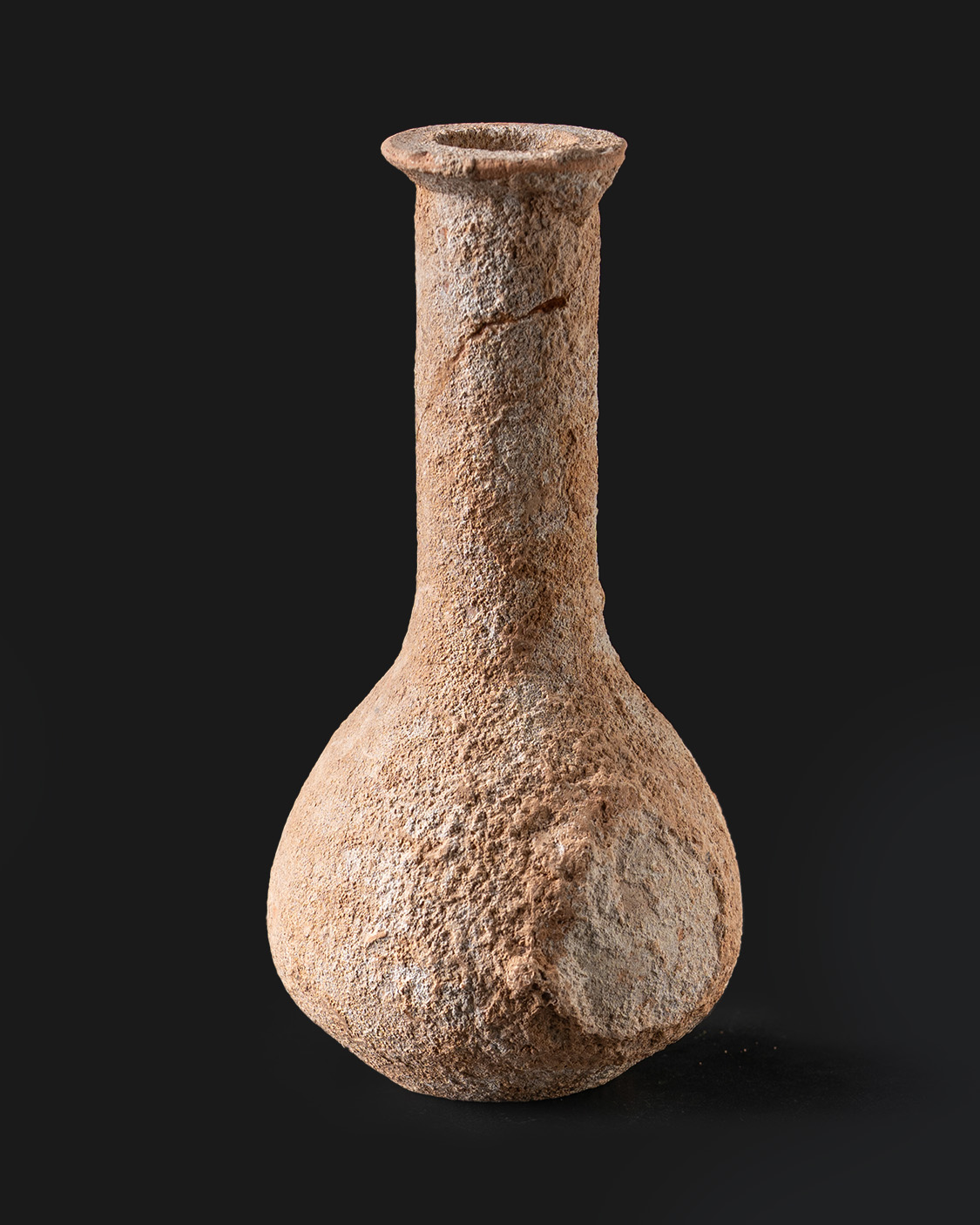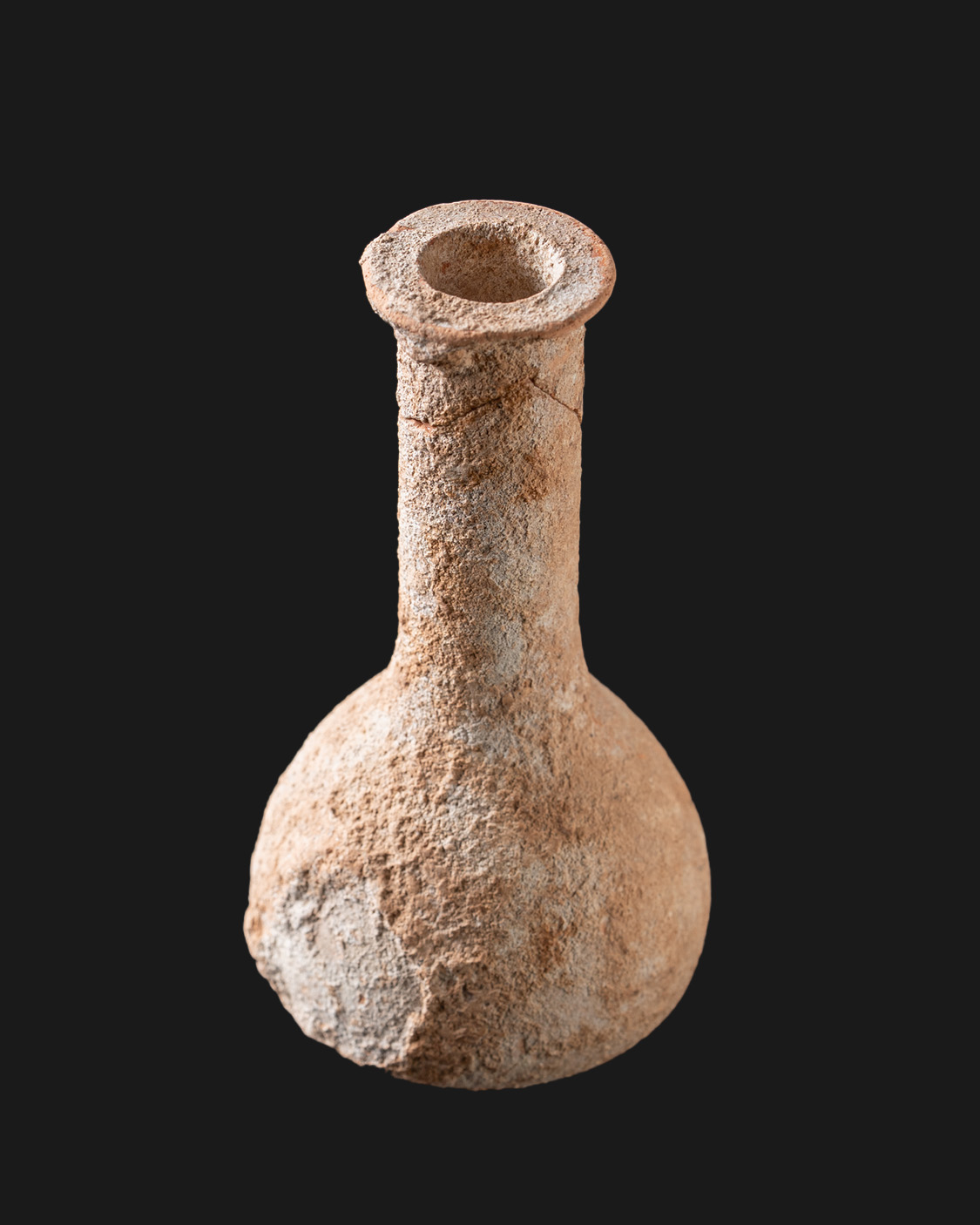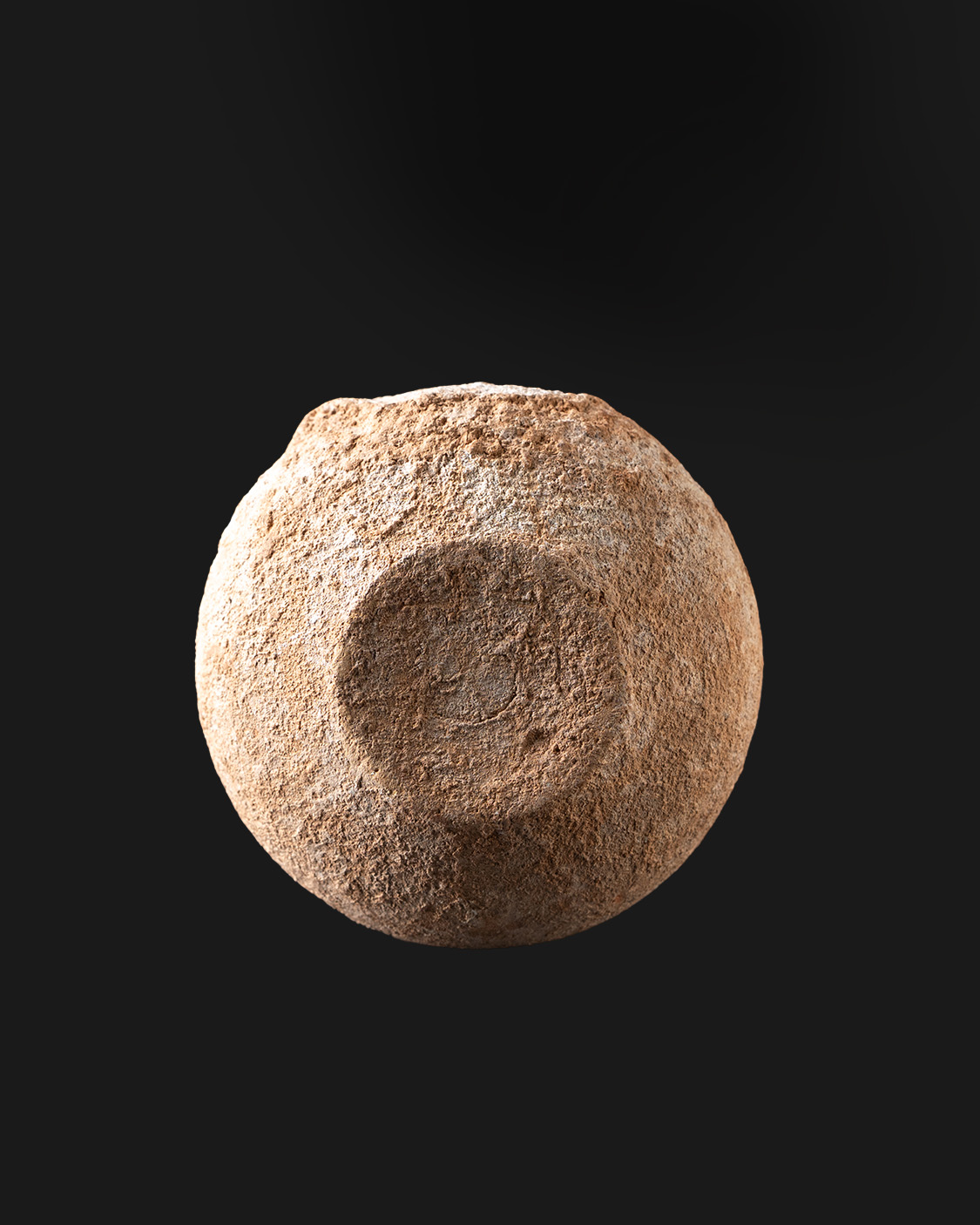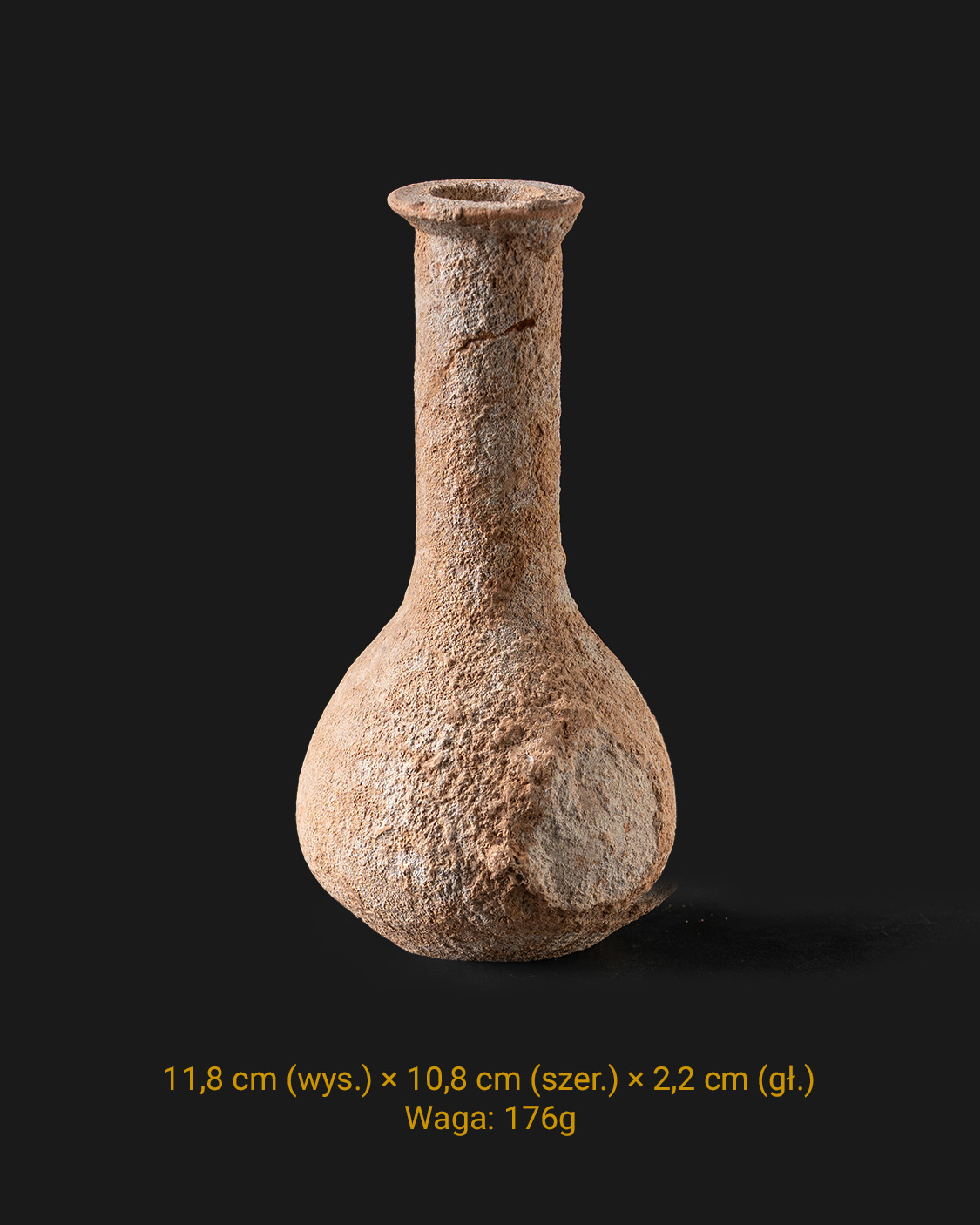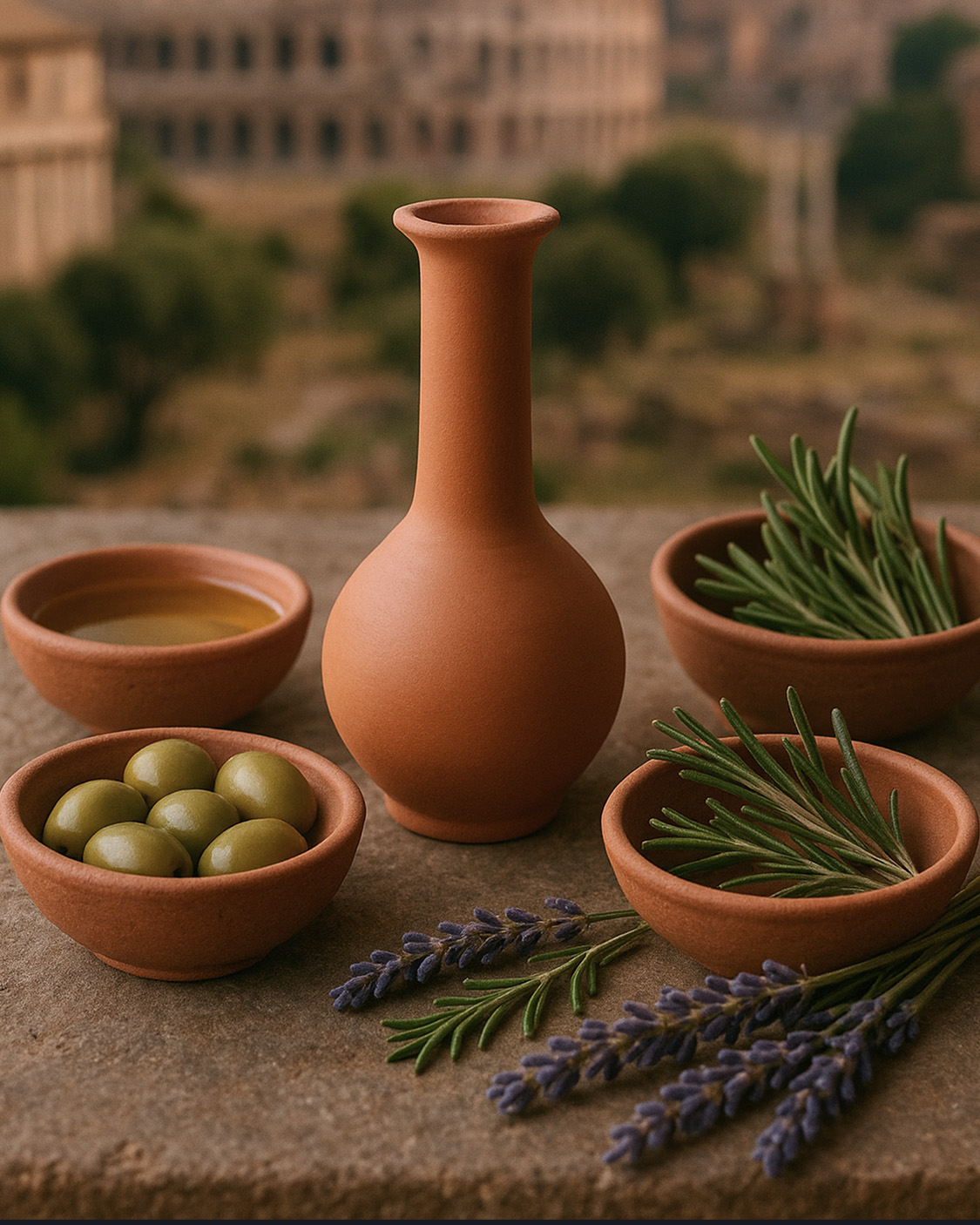Ancient Rome, terracotta balsamarium, ceramic, ca. 1st-2nd century A.D.
107,50 €
Authentic Roman balsamarium (unguentarium) from the 1st-2nd century BC, made of clay using a potter’s wheel. The vessel, which had a distinctive form – with a cracked belly, slender neck and wide, orifice-shaped spout, was used to store liquid fragrances and toilet scents. It was often part of the equipment of the deceased. Formerly it was believed that balsamaria were used to collect the tears of mourners during funeral ceremonies – hence the misnomer lacrimatorium (from lacrima – tear).
1 in stock
Symbolism
This authentic Roman embalmer from the 1st-2nd century B.C. is not only an object of everyday use, but also a a symbol of remembrance of the dead. Used as grave gift, was to protect and beautify the body of the deceased according to beliefs about life after death.
Historical context
W Ancient Rome taking care of the body was not only an expression of aesthetics, but also of culture and social status. Containers for oils and scents, such as this one, accompanied both daily hygiene and rites of passage such as burial. Their presence in graves testifies to the burial customs and mentality of Roman society at the time.


Collector's value
Original Roman balsamaria are highly valued by antique collectors and museum professionals. This copy preserved in good condition is an excellent example functional ceramics from the imperial era - ideal for display, educational and collecting purposes.
Aesthetic qualities
Although the form of the balsamarium is simple and utilitarian, it captivates authenticity and classic proportions. It is an item that can also be treated as a aesthetic decorative element, being a carrier of history and art of antiquity.
Did you know that.
For a long time, balsamaria were incorrectly called lacrimatoria (from the Latin lacrima - tear). It was believed that they were used to collect tears during mourning ceremonies. Although romanticized, this theory has been disproven, the vessels stored cosmetic oils and perfumes, not the tears of mourners. Modern analysis organic residues found in balsamaria carried out by means of gas chromatography and mass spectrometry showed the presence of oils, vegetable fats, resins and fragrances, but not compounds present in human tears (e.g., salts, enzymes)
Today it can serve as a unique interior decoration, part of private collection, an object for historical reconstructions or educational material. As part of the upcycling, can find new life in interior design with a hint of antiquity.

| Weight | 0,176 kg |
|---|---|
| Dimensions | 14 × 8 cm |
| Type |
Cosmetic vessel (unguentarium, balsamarium) |
| Form |
Cracked belly, slender neck, orifice-shaped spout |
| Materiał |
Clay (terracotta) |
| Kolorystyka |
Brick red |
| Technika |
Firing ,Turning |
| Czas powstania |
1st-2nd century after Chr. |
| Era |
Antiquity |
| Kraj pochodzenia |
Roman Empire ,Rome |
| Autor |
Unknown |
| State of preservation |
Good. |

